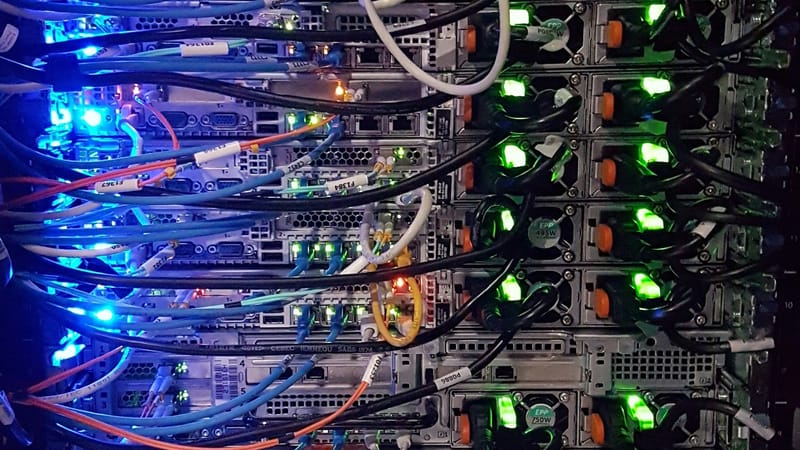AI’s Next Cyber Threat: The Dawn of Zero-Day Attacks

In the past, the phrase “zero-day” conjured images of hurried engineers patching flaws in software before criminals or spies could exploit them. A zero-day vulnerability meant an error that even its creators had not yet discovered, leaving systems exposed until a fix was devised. These flaws were perilous because they allowed attackers to slip through defences unseen.
Now a different kind of zero-day is emerging. It does not rely on mistakes in traditional code but on weaknesses in the very structure of artificial intelligence. Instead of a miswritten line of software, the flaw lies in the model’s training data, its architecture, or the unexpected behaviour it produces when pushed in the right way. Researchers and adversaries are beginning to probe these gaps, and the results suggest that the age of the zero-day AI attack is closer than many reali
Beneath the Surface
Artificial intelligence systems learn from oceans of data. A large language model is trained on billions of words scraped from books, websites, and social media. Computer vision models ingest vast libraries of images. The assumption is that more data produces more reliable intelligence. But hidden within this abundance are biases, contradictions, and poisoned signals that can embed dangerous behaviours.
Traditional software flaws are easy to describe: a missing input check, a misconfigured firewall, an unchecked pointer. AI vulnerabilities are different. They emerge from how models generalise or from quirks in training sets. A carefully crafted prompt might cause a chatbot to reveal private data. A manipulated image might trick a vision system into misclassifying an object. To a human eye, the image looks ordinary, yet to the model it contains a trigger.
This is why many experts now argue that AI security requires a new frame of reference. A zero-day in an AI model is not a bug to be patched in days. It is a structural weakness that may only become clear after the system has been deployed w
The Conditions for Risk
Several forces have converged to make these threats more likely.
Complexity and scale. Models are larger and more intricate than ever, some measured in hundreds of billions of parameters. They are no longer confined to tech giants but spread across finance, healthcare, and government. Each expansion multiplies the potential surface for attack.
Opacity. Few truly understand how models produce their answers. Even their creators struggle to explain outputs. This lack of transparency makes manipulation easier, since defenders cannot predict failure modes.
Incentive. As AI becomes central to business, the rewards for compromise grow. Criminals see new pathways to fraud or phishing. Governments see tools for surveillance or disinformation.
Adversarial techniques. Prompt engineering and adversarial machine learning have become sophisticated disciplines. Attackers learn to craft inputs that mislead models in ways imperceptible to humans. A self-driving car’s system, for instance, might interpret a stop sign as a speed limit if its pixels are altered subtly enough.
Early Signals
The warnings have already appeared.
Researchers have shown that poisoned training data can implant hidden triggers in models. A phrase that looks like nonsense can cause a chatbot to unlock prohibited responses. A model may behave normally in tests, only to behave differently in the wild when given the secret key.
Medical imaging has proven vulnerable. Studies show that by adding small amounts of digital noise to scans, adversaries can cause diagnostic systems to misread tumours. To a doctor glancing at the screen, the scan appears unchanged, yet the AI reports a clean bill of health.

Voice authentication has also been deceived. Systems designed to identify users by their speech patterns have been fooled by synthetic voices. With minor distortions, a fake recording can mimic the characteristics of a real person closely enough to gain entry.
Each case illustrates the same principle: vulnerabilities that cannot be patched with a line of code, but that arise from the design and training of the model itself.
What Is at Stake
The consequences range from the reputational to the existential.
When an AI system misbehaves, trust collapses quickly. A chatbot producing offensive content can damage a brand overnight. A diagnostic tool offering faulty advice can make patients question hospitals. Restoring credibility is often harder than repairing systems.
Regulation is sharpening. The European Union’s AI Act introduces strict categories of risk and demands rigorous testing. The UK and US are moving in similar directions. Organisations that ignore structural vulnerabilities may face not only attacks but legal penalties.
The economic toll is real. A compromised AI can enable fraud, theft of intellectual property, or costly downtime. Insurers are beginning to account for AI risk in premiums, raising costs for firms with poor safeguards.
National security implications are sobering. A compromised sensor system in a power grid could trigger outages. An algorithmic trading model manipulated by false signals could destabilise markets. The ripple effects make zero-day AI vulnerabilities a systemic threat.
Towards a Different Defence
The conventional tools of cybersecurity are not sufficient. Firewalls and antivirus programs cannot defend against poisoned data or adversarial prompts. Organisations need a new playbook.
Transparency and auditing. Models must be tested for resilience as well as performance. Training data should be logged and traceable. Interpretability tools, however imperfect, should be standard.
Securing the pipeline. Data sources must be vetted, sanitised, and validated. Models should be retrained regularly to correct for drift.
Hardened interfaces. Input filters can reduce exploit potential. Suspicious prompts can be flagged, and usage rate-limited.
Layered monitoring. Systems that track output for sudden changes can detect exploitation early. Incident response plans should include contingencies for rolling back or isolating models.
Collaboration. Industry, government, and academia need shared threat intelligence. Many vulnerabilities are first uncovered in research papers. Communication channels must be open before exploitation occurs.
The Public Dimension
Public awareness matters. People are fascinated by AI’s potential for mischief, and stories about vulnerabilities often spread widely. That curiosity is a double-edged sword. Alarmism can distort perception, but silence can breed complacency.
Platforms like Google Discover amplify this tension by surfacing stories about AI risks to millions. The popularity of these articles reflects a broader unease. Readers know AI is embedding itself in daily life. They want to understand what might go wrong and how it might be prevented.
Ethics and Disclosure
The conversation about zero-day AI also raises ethical questions. How much should be revealed, and when? Detailed public disclosures risk handing adversaries a blueprint. But excessive secrecy leaves organisations unprepared. Responsible disclosure—sharing first with those affected, then more broadly—is becoming essential.
Privacy is another concern. Training and testing data often contain sensitive information. Efforts to identify vulnerabilities must not compromise individuals. Medical and biometric data in particular demand strict oversight.
What Comes Next
The landscape is shifting quickly. Regulators in Europe, the UK, and the US are drafting rules that will define obligations for AI developers. Insurers are building risk models. Standards bodies are discussing certification schemes that could serve as trust signals for safe deployment.
Researchers are building defensive tools: detectors for poisoned data, monitors for model drift, architectures less vulnerable to adversarial input. Defensive prompt engineering and automated red-teaming are emerging as professions in their own right.
Yet attackers will not wait. The lesson of past cybersecurity waves is that vulnerabilities, once identified, are eventually exploited. What makes the current moment different is the difficulty of patching models that are opaque and deeply integrated into daily life.
A Closing Turn
In the security world there is always another threat waiting to be named. A decade ago it was ransomware. Before that it was worms sweeping across the internet. Each menace arrived with dire predictions, and each became part of the everyday grind of defence. Zero-day attacks built on artificial intelligence feel different, less predictable and more unsettling. They do not exploit coding mistakes so much as the very way machines learn to see and speak.
That makes them difficult to anticipate and harder still to contain. It also makes them alluring to adversaries who thrive on novelty.
Whether the future brings widespread calamity or only scattered mischief remains uncertain. For now, the researchers documenting these vulnerabilities work mostly in quiet, their papers circulating through academic channels and specialist conferences. Yet the sense within those circles is unmistakable: something new is stirring, and when it surfaces it will not resemble any breach we have seen before.
The story of the first true zero-day AI attack has not yet been written. But the feeling is that when it comes, it will redraw the boundary between promise and peril once again.






